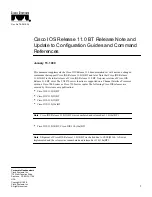
7.
Create each object on the backup system.
The ANSI name of the object must be constructed as follows:
•
catalog name: use the name of the backup catalog you created in Step 2.
•
schema name: use the name you used in Steps 4 and 5.
•
table or index name: must match on the primary and backup systems.
This command creates a table called TAB1 in the schema BCAT.SCH, with three
partitions, located on volumes $data02, $data13, $data14, respectively.
CREATE TABLE BCAT.SCH.TAB1 (a int not null, b int, primary key (a))
LOCATION $DATA02.ZSDXYZ3A.KQY8KY00
PARTITION
(ADD FIRST KEY (100) LOCATION $DATA13.ZSDXYZ3A.KQY8RK00,
ADD FIRST KEY (200) LOCATION $DATA14.ZSDXYZ3A.KQY8YG00);
The
subvolume.filenames
are identical between the primary and backup systems
in this example, but two of the volumes have been remapped for RDF between the
primary and backup systems: $data02 is replicated to $data02, but $data03 is replicated
to $data13 and $data04 is replicated to $data14.
With regard to the Guardian filename, you must use a fully-qualified LOCATION
clause, thereby ensuring that the underlying Guardian
subvolume.filenames
are
identical on the primary and backup systems; otherwise, the updater will report a 736
event, listing the underlying Guardian
subvolume.filename
of the object, and the
updater will wait until you have created such a file. At this point, you will have to
correct the naming problem as described in
“Correcting Incorrect NonStop SQL/MX
Name Mapping” (page 332)
.
When you have completed Steps 6 and 7 for each table and index, the primary database
is ready for transaction activity, and the backup database is ready for RDF to replicate
that transaction activity.
Creating a NonStop SQL/MX Backup Database From an Existing Primary
Database
To create an RDF backup NonStop SQL/MX database from an existing primary database, perform
these steps:
1.
Create a catalog on your backup system to correspond to the primary system catalog whose
objects you want RDF to replicate. The name of the backup catalog must differ from the
name of the primary catalog. The volume in the optional LOCATION clause might differ
from the volume used on the primary system.
CREATE CATALOG catalog_name LOCATION optional_guardian_location;
For example, if issued on the backup system, the command
CREATE CATALOG BCAT LOCATION $DATA01;
creates a catalog named BCAT on volume $DATA01 on the backup system.
For the rest of this procedure assume that the name of the primary system is \PNODE and
the name of the backup system is \BNODE.
2.
Create the schema on the backup system using the same schema name and the same
subvolume name as on the primary system.
For example, if issued on the backup system, this command creates a schema on the backup
system called SCH in catalog BCAT using subvolume ZSDXYZ3A:
CREATE SCHEMA BCAT.SCH LOCATION ZSDXYZ3A;
You must use the LOCATION clause. If you specified the LOCATION clause when creating
the primary system's schema, you must use the same subvolume here. If you did not specify
the LOCATION clause when creating the primary system's schema or if you do not know
326
NonStop SQL/MX and RDF
Содержание NonStop RDF
Страница 68: ...68 ...
Страница 186: ...186 ...
Страница 260: ...260 ...
Страница 278: ...278 ...
Страница 284: ...284 ...
Страница 290: ...290 ...
Страница 308: ...308 ...
Страница 322: ...322 ...
Страница 336: ...336 ...
Страница 348: ...348 ...
Страница 464: ...464 ...
Страница 478: ......
















































